At the time of writing (June 2018), a rather significant event is taking place on Thoresby Estate: The renovation and restoration of the Walled Garden (now known as the Echium Garden). What makes this site of particular historical importance is that its construction was completed even as the present
3rd Thoresby Hall was still being built.
The Walled Garden was designed to provide for the needs not just of the Duke’s family and guests, but for the staff and servants associated with the Hall. Indeed, such would be the hustle and bustle of this year round task, the garden was deliberately situated at a distance east of the Hall in order to minimize disturbance. Ordinance Survey maps of 1906 show it already semi-secluded by trees.
Believed to have been built c.1765, the earliest reference to the Walled Garden I have found comes from the estate’s 1860 Directory:
“A new Hall is about being erected on a commanding eminence near the rockery and in line with the Gardens, the latter of which have been newly formed and enclosed by a neat brick wall. The gardens, including the orchard and kitchen grounds, cover about 10 acres of land. There is a neat residence for the gardener on the grounds”.
The Head Gardener is listed in all the estate’s directories from 1864 – 1900 as Archibald Henderson. Directories from 1904 – 1930s list this position as being taken over by Arthur Simmons. (Simmons is also listed as making a 10 shilling contribution towards the World War 1 Memorial gated entrance to Perlethorpe Church.
THIS LINK).
A reliable description of the Walled Garden can be found in Robert White’s “Worksop, The Dukery, and Sherwood Forest” (1875):
“To the East of the Hall are the gardens, which cost £4,000, covering 8.5 acres; 5.5 acres of which are enclosed by brick walls. The rest is in slips on the East, North and West sides, with an orchard on the North. The kitchen garden is intersected by two fine broad walks 550 feet long which from North to South pass out through a pair of very splendid iron gates into the park. The lofty conservatory occupies a central position in the long range of 20 well-stocked forcing houses which are about 560 feet in length”.
The World Wars of 1914/18 and 1939/45, both of which saw a military presence on Thoresby Estate, would have a negative impact. The former mostly from the enlistment and loss of life of young male workers, the latter due to the Estate being requisitioned by the military. Evidence of their activity here is still present today in the “tank dip”, the brick vehicle maintenance ramp, and perhaps most significantly the concrete roads in close proximity to the Walled garden itself.
The Walled Garden never really recovered from those times, being abandoned altogether upon the death of Gervas Pierrepont, 6th Earl Manvers, in 1955. The news that this site is being restored, when so much history risks being lost, is welcome news indeed.
Above: Walled Garden as viewed from the river Meden.
UPDATE AUGUST 2020: Sadly this garden, variously known as the Echium Garden and the Walled Garden, closed down at the very beginning of August 2020, citing the cause as the lease expiring. A sad loss to those of us who value the history of Thoresby Estate and the wish to see it preserved.
For more about Thoresby Estate during the war years see
THIS LINK,
THIS LINK, and
THIS LINK.












































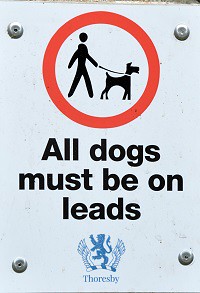 Thoresby Hall Hotel, Sherwood Forest and Clumber Park are recommended attractions for a day trip or short vacation. The
Dukeries area is of keen historic interest. NOTE: Apart from public domain postcards and brochures ALL photographs herein are copyright Ian Gordon Craig, exclusive permission granted to Thoresby Estate for their use elsewhere.
Thoresby Hall Hotel, Sherwood Forest and Clumber Park are recommended attractions for a day trip or short vacation. The
Dukeries area is of keen historic interest. NOTE: Apart from public domain postcards and brochures ALL photographs herein are copyright Ian Gordon Craig, exclusive permission granted to Thoresby Estate for their use elsewhere.
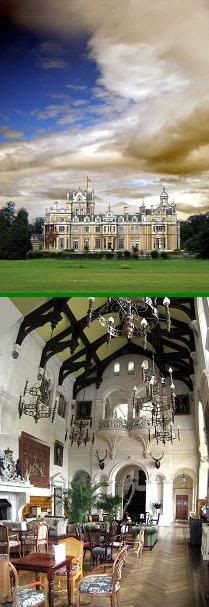 Thoresby Hall as photographed Summer 2009, now a successful Warners Hotel.
Thoresby Hall as photographed Summer 2009, now a successful Warners Hotel.
 Robert Pierrepont (1584 - 1643), 1st Earl of Kingston upon Hull, bought Thoresby for his second son William.
Robert Pierrepont (1584 - 1643), 1st Earl of Kingston upon Hull, bought Thoresby for his second son William.
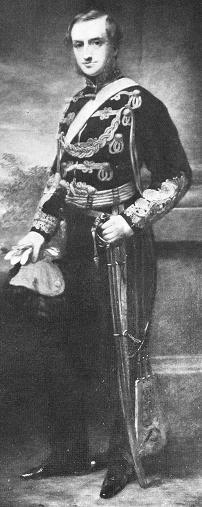 Sydney William Herbert Pierrepont (1825 - 1900), 3rd Earl Manvers, built the present Thoresby Hall, St John's Church,
Perlethorpe School, and generally shaped Thoresby Estate as it looks today.
Sydney William Herbert Pierrepont (1825 - 1900), 3rd Earl Manvers, built the present Thoresby Hall, St John's Church,
Perlethorpe School, and generally shaped Thoresby Estate as it looks today.
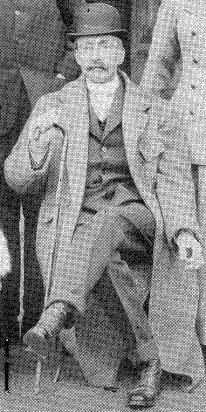 The 4th Earl Manvers (Died 1926).
The 4th Earl Manvers (Died 1926).
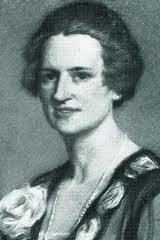 Countess Manvers (d.1984). Examples of her paintings are always on show at Thoresby Gallery.
Countess Manvers (d.1984). Examples of her paintings are always on show at Thoresby Gallery.
 ABOVE: The statue of Robin Hood in the courtyard at Thoresby Hall, by Tussaud - Birt, is showing its age, but remains one of
my favourites. The Art Gallery, crafts shops, and restaurant within that courtyard are recommended.
ABOVE: The statue of Robin Hood in the courtyard at Thoresby Hall, by Tussaud - Birt, is showing its age, but remains one of
my favourites. The Art Gallery, crafts shops, and restaurant within that courtyard are recommended.

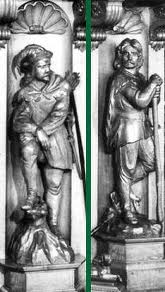
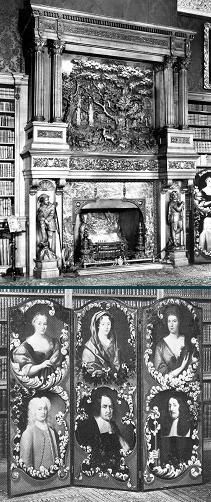 Carved oak fireplace in the Thoresby Hall library with its depiction of the Major Oak (Robin Hood's Tree), and the screen
featuring the Cromwell family. Oliver Cromwell is known to have stayed in Thoresby Hall before the English Civil War.
Carved oak fireplace in the Thoresby Hall library with its depiction of the Major Oak (Robin Hood's Tree), and the screen
featuring the Cromwell family. Oliver Cromwell is known to have stayed in Thoresby Hall before the English Civil War.
 The Green Bridge sited near the edge of the cricket pavilion in front of Thoresby Hall across which the Duke's carriage would take him to Perlethorpe Village.
The Green Bridge sited near the edge of the cricket pavilion in front of Thoresby Hall across which the Duke's carriage would take him to Perlethorpe Village.
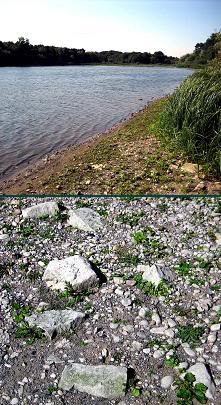 The view along Thoresby Lake towards Budby. Are these bricks at the water's edge remnants from the original Thoresby
Hall?
The view along Thoresby Lake towards Budby. Are these bricks at the water's edge remnants from the original Thoresby
Hall?
 The River Meden winds its way from 7 Ton Bridge near Thoresby Hall towards Perlethorpe Village.
The River Meden winds its way from 7 Ton Bridge near Thoresby Hall towards Perlethorpe Village.
 Budby Castle, once known as William Castle, and the River Meden winding towards Thoresby Lake under the remains of
Pierrepont Bridge, once described as classical and elegant.
Budby Castle, once known as William Castle, and the River Meden winding towards Thoresby Lake under the remains of
Pierrepont Bridge, once described as classical and elegant.
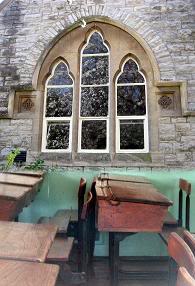
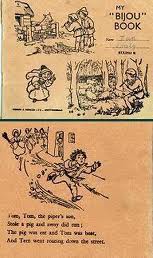 Children's exercise book from the school, 1958.
Children's exercise book from the school, 1958.
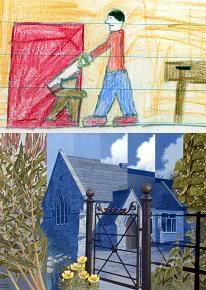
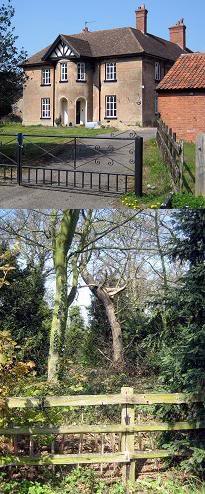



 Perlethorpe Church graveyard, where the original chapel once stood. The covered gate was a later addition in memorium to
the men of Budby and Thoresby who fell in World War 1.
Perlethorpe Church graveyard, where the original chapel once stood. The covered gate was a later addition in memorium to
the men of Budby and Thoresby who fell in World War 1.
 Robin Hood's Tree, the Major Oak, was once under the care and supervision of Thoresby Estate. Responsibility for its
upkeep changed to Nottingham City Council c.1969. Here it is pictured in in Spring, Autumn, and Winter.
Robin Hood's Tree, the Major Oak, was once under the care and supervision of Thoresby Estate. Responsibility for its
upkeep changed to Nottingham City Council c.1969. Here it is pictured in in Spring, Autumn, and Winter.
